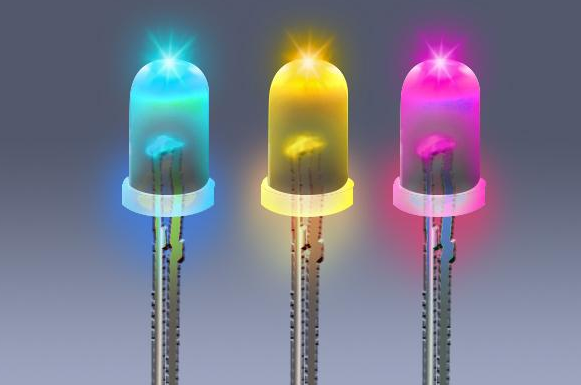light emitting diode virtually translates into light emitting diode. Light-emitting diodes (leads) are semiconductors that convert electrical energy into light energy. The basic structure of leads is that an electroluminescent semiconductor chip is placed on an led shelf and sealed around by epoxy resin. At the core of a LED is a wafer made up of a P-type semiconductor and an N-type semiconductor, with a transition layer called a "PN junction" between the two.
In some PN junctions, when a tiny number of carriers are injected to recombine with a large number of carriers, the excess energy is released in the form of light, thus converting electrical energy into light energy. That's how the leds glow. However, if the reverse voltage is applied to the PN junction, the minority carriers will be difficult to inject and the light will not be emitted at this time. The diode, which uses the principle of injection electroluminescence, is called a light-emitting diode, or LED. So here's the dmx512 led strip.

The LED lights we see commonly come in a variety of colors, depending on the material that forms the PN junction. When the LED is in the forward working state, that is, when the forward voltage is input at both ends of the semiconductor, and the current flows from the anode to the cathode of the LED, the semiconductor crystal will emit different colors of light depending on the material made. For example, magnesium arsenide diodes emit red light, magnesium phosphide diodes emit green light, silicon carbide diodes emit yellow light, magnesium nitride diodes emit blue light... The intensity of light varies with the amount of current.
Compared with alternative light sources, LED semiconductor light source is called "green light source", has numerous advantages that are difficult to replace: high luminous efficiency, light efficiency can reach 50 to 200 lumens/watt; less power consumption, the same lighting effect. LED light consumption is an eighth of incandescent light, is half of fluorescent light; long service life, the average can be used for 100,000 hours; brightness and color are easy to control, can realize color dynamic shift and digital control, brightness continuous adjustable; it does not contain mercury, sodium and other harmful substances, waste can be recycled, more environmental protection. In addition, LED semiconductor light source has the characteristics of tiny size, strong reliability, short response time, simple structure and so on, which is highly suitable for urban landscape lighting.
But some LED lights also have obvious disadvantages, that is, they may cause some damage to the eyes. The light from leads is spectrally different from the light from traditional incandescent and fluorescent lamps. The LIGHT THAT INCANDESCENT LAMP, FLUORESCENT LAMP GIVES OUT HAS SAME AS SUNLIGHT "RED ORANGE YELLOW GREEN BLUE PURPLE" 7 COLORS, BUT THE LIGHT THAT COMMON LED LAMP GIVES OUT HAS 3 KINDS OF COLORS ONLY -- RED, GREEN, BLUE, AMONG THEM AGAIN WITH WAVELENGTH SHORTEST "BLUE LIGHT" MOST BASIC AND IMPORTANT. But the eye is not overly long time exposure to blue light, if exposure to blue light time is too prolonged, can produce photochemical reaction of retinal damage, have produced numerous cell toxicity of free radicals, which damage retinal cells growth and normal work, and will cause the cortex on retinal cells to be impaired, even produce macular lesion.
In order to increase the brightness of LED lights, some bad businesses will use blue light to "stimulate" different colors of light, thus creating the problem of "blue light excess". However, typically after the national quality inspection of the listed LED lamp products, there will not be "blue light excess" hidden trouble.